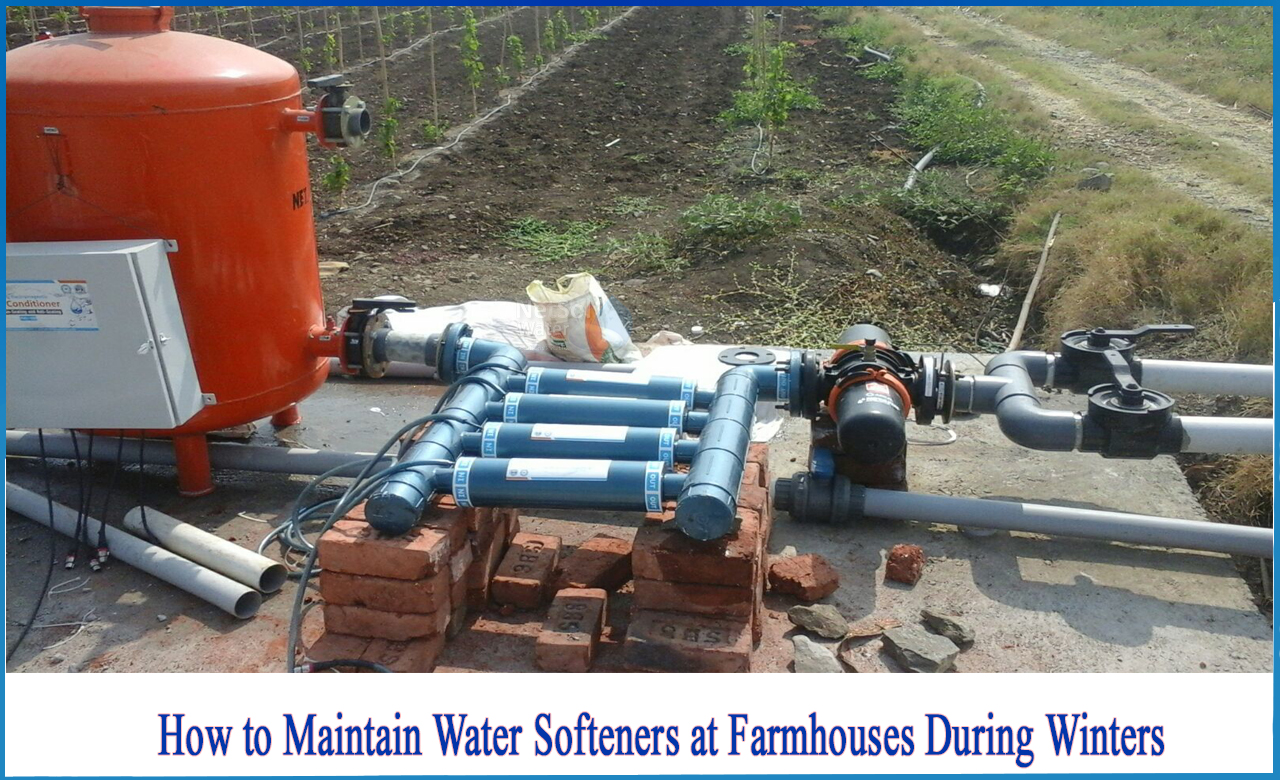WHAT IS A WATER SOFTENER?
Water softeners are salt or other chemical compounds that use their natural properties to draw out impurities like calcium and magnesium that cause water to become "harder," leaving scale deposits on surfaces it dries on.
A water softener, unlike a water filter, does not actually clean the water you drink. Water softeners are only useful for removing specific impurities from water and have no effect on the sterility of drinking water.
Installing a water softening system in the home is the solution to hard water minerals. This is a water filter that connects to the water supply and purifies the water at the source. Salt-based water softeners add sodium to the water, which attracts and removes excess calcium and magnesium ions, easing the water's hardness. This will aid in the reduction of soap scum residue and other water hardness mineral indications in your home.
How do I protect my water softener in Winter?
When the nights become colder and the days become shorter, it is necessary to protect the water softener system so that it can continue to function properly in the days ahead. If one fails to maintain their water softener, they may face unexpected repair bills when the weather warms up again.
STEPS TO MAINTAIN WATER SOFTENERS IN WINTERS
STEP 1: BYPASS MODE
Begin by switching the water softener system to bypass mode and then completely disconnecting it from the bypass system.
STEP 2: REMOVE WATER DEPOSITS FROM CONRTOL VALVE
Remove the control valve from the system after locating it in the medial tank. We recommend storing the control valve system in a warm, dry location. Water can be stored in a number of small ports and valves on the control valve. If these water deposits freeze, the control valve system may be damaged, resulting in an unexpected repair bill.
STEP 3: DRAIN THE WATER
It is now time to drain the water from your media tank. Keep in mind that some systems have two resin tanks that must be drained. Then, drop 5-10 water softener salt pellets into the distributor tube to deal with the 2"-3" of water that is usually left in the tank. Because resin holds the water, you can't get rid of it, but the salt will keep it from freezing and causing damage to the distributor tube and media tank button.
STEP 4: ADD EXTRA SALT
Remove the brine assembly from the brine tank, drain the water, and don't be concerned about the residual water. The water will most likely be a saline solution that is resistant to freezing, but if you're worried, add some extra salt. If you don't have any water softener salt on hand, simply drain the water.
STEP 5: PROTECT THE MEDIA TANKS
Cover the media tanks with a cap or an airtight cover to prevent dirt, debris, vermin, and insects from getting inside.
STEP6: SANITIZATION
After the cold weather has passed, you will need to reassemble the entire water softener system. Before you begin, sanitise the system to ensure that there are no contaminants present.
CONCLUSION
NETSOL WATER is the top-most manufacturer of all water treatment systems. It ensures that every need of their customer should be fulfilled. As per specific issue of water at your home, Netsol can provide the ideal filters to resolve your issue.
Netsol Water is Greater Noida-based leading water & wastewater treatment plant manufacturer. We are industry's most demanding company based on client review and work quality. We are known as best commercial RO plant manufacturers, industrial RO plant manufacturer, sewage treatment plant manufacturer, Water Softener Plant Manufacturers and effluent treatment plant manufacturers. Apart from this 24x7 customer support is our USP. Call on +91-9650608473, or write us at enquiry@netsolwater.com for any support, inquiry or product-purchase related query.



